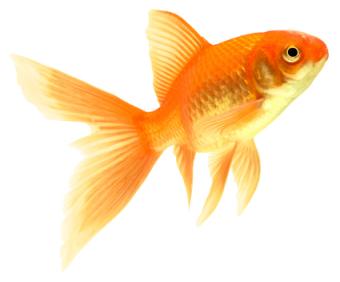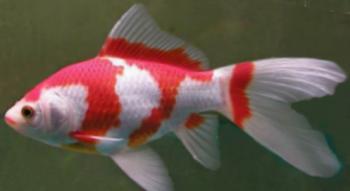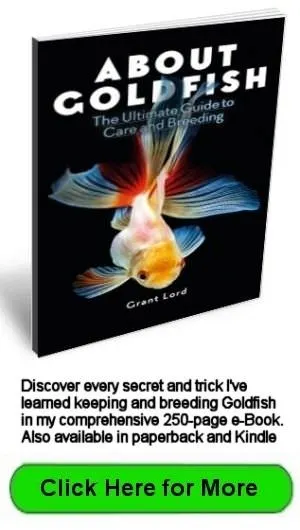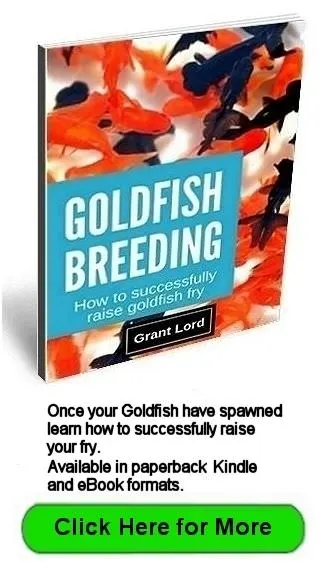Comet Goldfish
The Comet is one of two goldfish varieties that originated in the USA.
 Comet Goldfish
Comet GoldfishThe Comet goldfish is believed to have been a mutation of Ryukins or red Fantails. It would have taken some serious selective breeding to achieve the slim body shape and crimson coloring from such a mutation.
It is thought to have originated about 1880 in US Government ponds on the Mall in Washington D.C.
A pioneer American breeder Hugo Mulertt may have produced them at about the same time. It was he that gave it its name.
Comets are suitable for ponds. They are hardy active fish that can withstand low temperatures and are bred in the largest numbers of any variety in the USA.
The body shape is similar to the Common Goldfish or Prussian carp but should be even slimmer. The fins should all be longer than the Common Goldfish, preferably double the length or longer.
The scale group is always shiny metallic. Any fish that has nacreous scales will be a
crossbred specimen or is a Bristol Shubunkin if it has rounded caudal fin lobes, or an American/Japanese Shubunkin if it has pointed lobes.
The color change from the drab wild coloration to gold starts quite quickly, at about a month old. Any fish that haven’t changed color by six months old shouldn’t be used as breeding stock.
 Sarasa Comet with typical red and white markings
Sarasa Comet with typical red and white markingsAnother variety often mentioned is the Sarasa Comet. Sarasa is the Japanese word for calico. This variety isn't colored the usual solid orange/red like most comets, but has a mix of red and white patches over the body and fins.
This color variation can occur in any metallic scaled goldfish but breeders have managed to scatter the two colors more evenly across the body.
These goldfish don’t suffer the digestive problems caused by poor food that can lead to balance problems in the more developed varieties with short round bodies.
Comet Goldfish Characteristics
Country of Origin: USA
Maximum size (body length): 8 inches (200mm)
Caudal Fin: Single, as long as the body, deeply forked with pointed ends
Dorsal Fin: Present
Anal Fin: Single
Scale Group: Metallic, intense red coloration. Many have red and white coloration but for show specimens a single red color is desired.
Eyes: Normal
Distinguishing traits: Extended fin length, with the caudal fin the length of the body.
Breeding: One of the easier varieties to breed because they lack features that hinder breeding in the more exotic varieties such as telescopic eyes or extended double caudal fins. They are quite active fish so a large aquarium or small pond is required.
Male/female differences are more obvious in the breeding season because of the slim body shape. The female becomes much more rounded as the eggs ripen prior to spawning.
Special requirements: Nil




